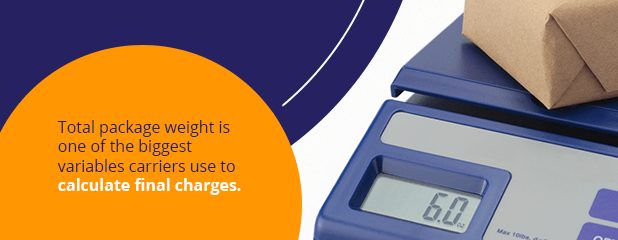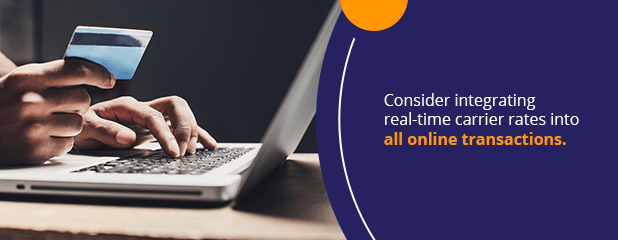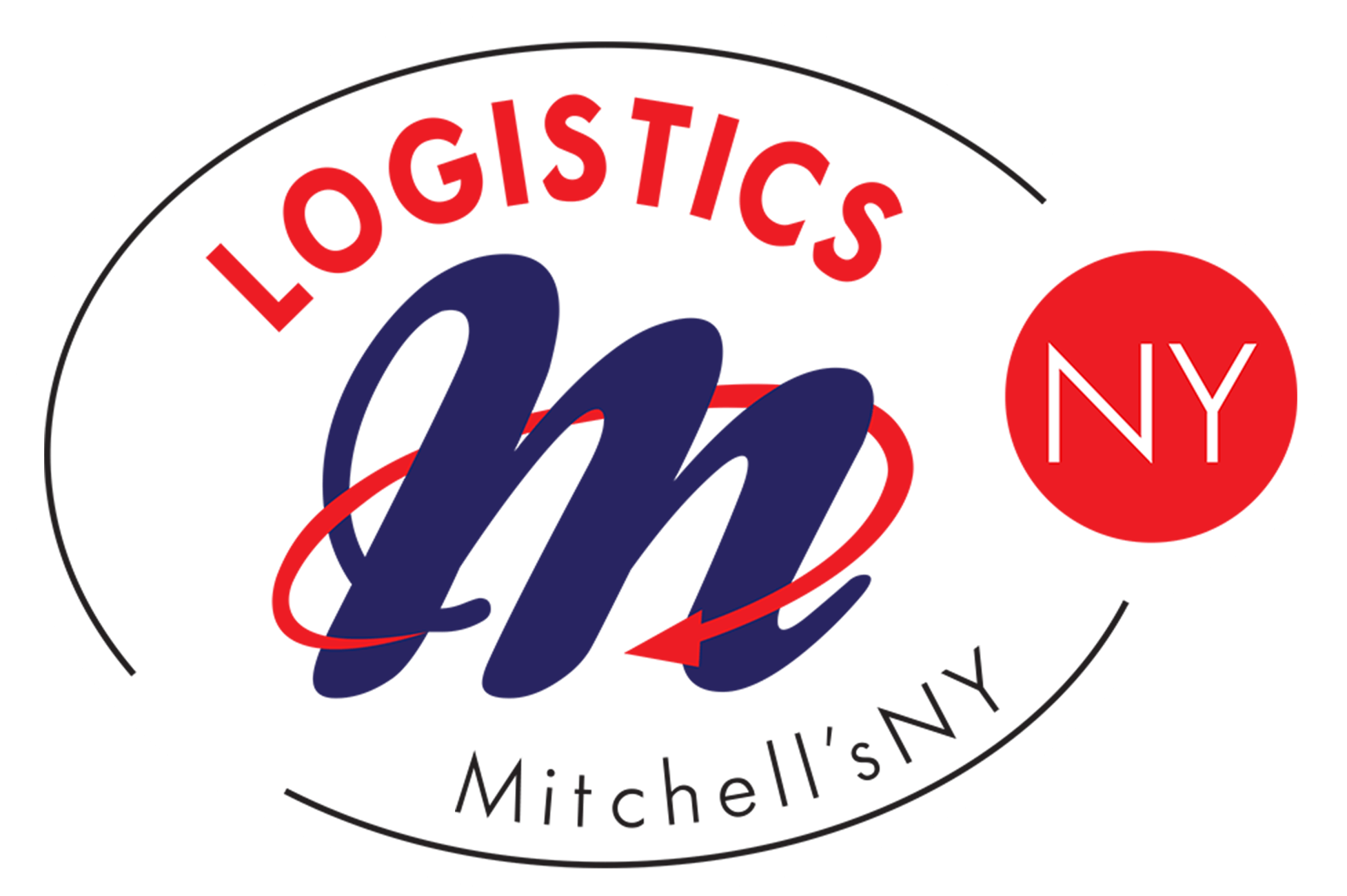
To flat-rate ship or not? That is the question, alongside many other small business owners must ask when calculating profitable order fulfillment, handling, and shipping practices.
Without a delivery logistics strategy, small businesses eat up their own profit margins — especially e-commerce merchants. How many of these money-saving order fulfillment and shipping best practices can your small business integrate, putting more money back in your pocket?
Small Business Shipping Tips: Ways to Reduce Fulfillment and Packaging Costs
Order fulfillment and packaging expenses are a significant portion of operating costs. Some aspects are fixed, while others are within your control to trim, tailor and improve. Use these tips below to cut order fulfillment and packaging costs, especially when just starting your new business.
1. Go Light or Go Home
Total package weight is one of the biggest variables carriers use to calculate final charges. The lighter your parcels, the fewer carriers can charge you to ship them.

What’s more, carriers such as USPS even offer special discounts for shipments that fit certain weight specs. One of USPS’ most popular discounts here is its priority mail weight discount, which lowers the cost for packages under 20 pounds and measuring less than .5 cubic feet in total volume.
Trade-in a heavier cardboard packaging for lighter plastic or crumpled up paper for air-filled plastic bags. Just be sensible when it comes to swapping or repurposing shipping materials. Reinvesting in lighter but equally durable materials pays off in shipment savings but backfires when high-quality materials are dropped for inferior boxes, bags, wrap and more.
2. Source Packaging From Carriers
Customized product packaging is great for branding but not so great on your wallet. Instead, source box packaging directly from your carriers. Using your own customized product boxes typically results in what’s known as an unusual box size fee, tacking additional charges onto each and every shipment.
3. Use Custom Kitting
Custom kitting ensures similar individual merchandise is stored and bundled together. The tactic combines inventory and warehouse management best practices to reduce order fulfillment “search times” and shipping mistakes while also increasing assembly speeds if called for.
Kits can be shipped in-and-of themselves, requiring only a proper label before heading onto a truck, train or plane. Likewise, custom kits can also be ready at a moment’s notice for packaging into other shipping containers, again improving your small business’ order fulfillment rates and per-unit costs.
4. Outsource via Zone Skippers
Zone skipping is a form of outsourcing that has you bundle all shipments heading to a broader geographic area (a.k.a. “zone). A partner consolidator then handles the micro-distribution and last-mile transportation within that particular area.
Zone skipping is particularly great during peak sales cycles, such as during the holidays, or when you routinely ship larger, heavier products. Upticks in orders across sales regions can be hard to manage using an entirely in-house, ad-hoc logistics system. With zone skippers, you let consolidators manage the more expensive lags of distribution routes, using their own distribution centers, fleets and tracking technology. It’s a kind of outsourced partnership that saves you time and money overall in reduced shipping costs per package.It also gives you a packaging and shipping partner during the busiest times of the year.
Ways to Reduce Shipping Costs
Businesses of all sizes are spending record-breaking amounts on shipping. For small businesses, in particular, it’s never been more critical to implement a shipping strategy to manage costs and widen profit margins. Here are a few expert-approved ways to do so.
1. Reevaluate Free Shipping Opportunities
Free shipping has become a consumer expectation. So much so, online shoppers might be hesitant to order from brands that don’t offer it — especially if they’re about to make a big purchase. Most customers want to save money on shipping.

Without shipping costs factored into your merchandises’ price tags, though, free shipping is a burdensome amenity. Instead, consider free shipping under select circumstances:
- Within certain times of the year: For example, during the peak holiday shopping period between November and December. The uptick in sales and other special deals will likely make up for the free shipping expenses incurred.
- Within geographic regions: Free shipping is much more affordable when offered only within your peak sales regions, for example, to the states directly surrounding your own.
- 24/7/365 for loyalty program members: Customers participating in your loyalty program or tiered subscription service may receive free shipping as part of their member rewards.
2. Weigh Out Your Products
Your ideal carrier pricing model will be determined mostly by the weight of your shipments. Bear in mind that your small business likely falls into one of two product weight circumstances:
- If you sell lighter or comparatively uniform products: Light or uniform merchandise will be cheaper to ship on a per-item or zone-based approach. With these pricing models, you’re charged predominantly based on where the customer is, leading to more predictive shipping costs. Less variability in your monthly shipping expenditures then means you can offer more amenities to your customers, such as transparent flat-rate shipping.
- If you sell heavier products, weighing more than two pounds: Consider business accounts with established private carriers. Creating shipping accounts with these carriers tends to be cheaper than ad-hoc shipping through the Postal Service and also introduces several cost-saving perks, such as pre-printed shipping labels.
3. Shop Around for Carriers
You shop around for other vendors and partners for your business. Extend that same mindset onto private couriers and shipping services, from household names like FedEx, UPS and DHL to smaller, regional shipping 3PLs offering competitive rates in pertinent sales areas. Bargain for the most economical rates for shipments with the tightest profit margins. In most cases, these will be your heaviest/largest 20% of merchandise as well as your lightest/smallest 20% of merchandise. It may even be cost-effective to use one carrier for heavy shipments and one carrier for lighter loads.
4. Integrate Real-Time Carrier Rates Into Checkout

Consider integrating real-time carrier rates into all online transactions. Depending on your e-commerce platform, you can display a range of carrier’s actual prices and delivery timelines right there at checkout for customers to view. Offering such transparency takes the shipping burden off your shoulders, letting customers choose the rate and delivery schedule they’re comfortable with. It also lets people choose the exact service they want.
5. Partner With a Freight Shipping Service for Small Businesses
Freight forwarders and similar 3PLs often maintain regional distribution networks offering valuable services at competitive rates, such as same or next-day delivery. Most small businesses can’t manage these short delivery windows on their own — or can’t afford to pay what the big-name carriers charge for them. A freight shipping or forwarding service for small businesses is designed to manage such logistics for organizations of your scale. Many even carry bulk discounts and similar specialty rates, again widening your costs savings and giving you even more choice of who to ship with.
Are You Paying Too Much for Shipping?
Mitchell’sNY Logistics specializes in 3PL services for NYC and the wider tri-state area. Give us a call to compare rates. Then see how we can deliver your products in and around Manhattan far safer, faster and more cost-effectively than the big carriers.






